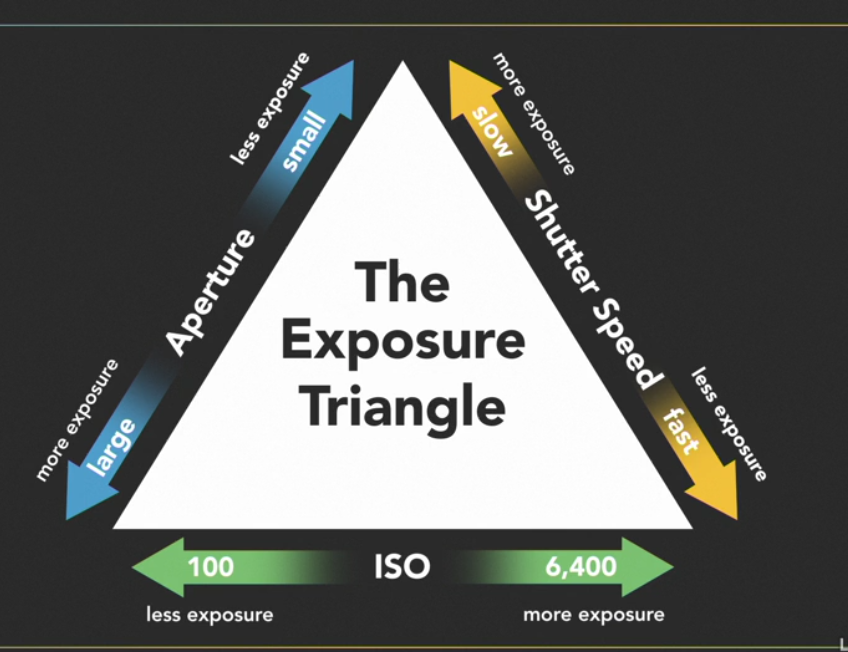photography
Tags: personal
Classes
Aperature
- Lower aperature means lower lens open
- f/2.4 - f/8, etc
- Changing aperture changes depth of field
- Shallow depth of field is basically impossible on phone
- Wider aperture means shallower depth of field
- Shallower depth of field means more focus on closer thing
ISO
- Higher ISO means higher noise, but allows for faster shutter speed
Exposure Triangle

Light Meter
- Only works on generalized assumptions
- Databases, facial recongition, etc
Depth of Field
- Unlikely to achieve shallow depth of field from smartphone, due to small sensor
- Has to make changes to ISO
- No aperature changes on phones
- Phone camers don’t have a shutter!
- Fast moving objects should be test shotted first!
- ISO range is very different
- Does have exposure compensation control
- Makes up for the lack of manual overrides
- Shooting in a RAW format lets you use manual exposure
- Biggest diferences is in the actual mechanics of shooting
Shooting with a smartphone
- The flash is usually not needed. Typically switch it off
- HDR feature should be turned off until assured needed
Exposure
- Use most of the frame
- Dynamic range: ratio of darkest to brightest dynamic range
- Brightness is measured in stops
- Double light -> “1 stop”
- Human eye has ~18 stops
- Further away from the subject reduces the dynamic range
- Pay attention, as the camera moves around, it makes for different decisions
- Tapping for focus and exposure
Low Light Shooting
- Flash is unnatural
- Especially for low light
- Make sure elbows at your side
- Don’t hold breath (makes you shake more)
- Wait for screen to go black
- Don’t trust the view finder
- Careful of motion blur, view blurring, and others
- Careful to tell you when the exposure is done
Night Mode
- Night mode on phones composite large numbers of photos
Focal Length
- Shooting with different focal length does not mean the image is the same
- Lens changes the background
Zooming
- Don’t bother with pinch to zoom
- Take the shop, crop it later
Shooting with flash
- Fill flash -> filling in the shadowy areas with flash to compensate for high light in background
- Flash on phones is not very strong, range is 3-4 ft
Orientation
- Most people shoot in portriat orientation
- Drop to your knees to take a different PoV
Aspect Ratio
- 4:3 to 16:9
- crop everything out you don’t need
- play around with where to put the horizon
Black and White Photos
- Potenially easier, less information
- Stripping out the information density
- The conversion in post-production is a lot easier
- Gives the option to make the photo simplier
- Look for photos about lines and shape and form
Portrait Mode
- Computational photography
- Fakes shallow depth of field
- Look for mistakes in the portrait mode filters
- Not compatible with RAW
Panorama Mode
- Most useful for wider angle in a small space
- Fakes a wide-angle lens
Shooting in raw
- Camera doesn’t apply changes
- Raw data from senors
- Adjust white balance
- Sometimes recover overexposed highlights
- Higher bit depth
- Does not:
- Sharper image
- Greater dynamic range
- Strictly about editing
Add on lenses
- Macro lens lets you scale 1:1